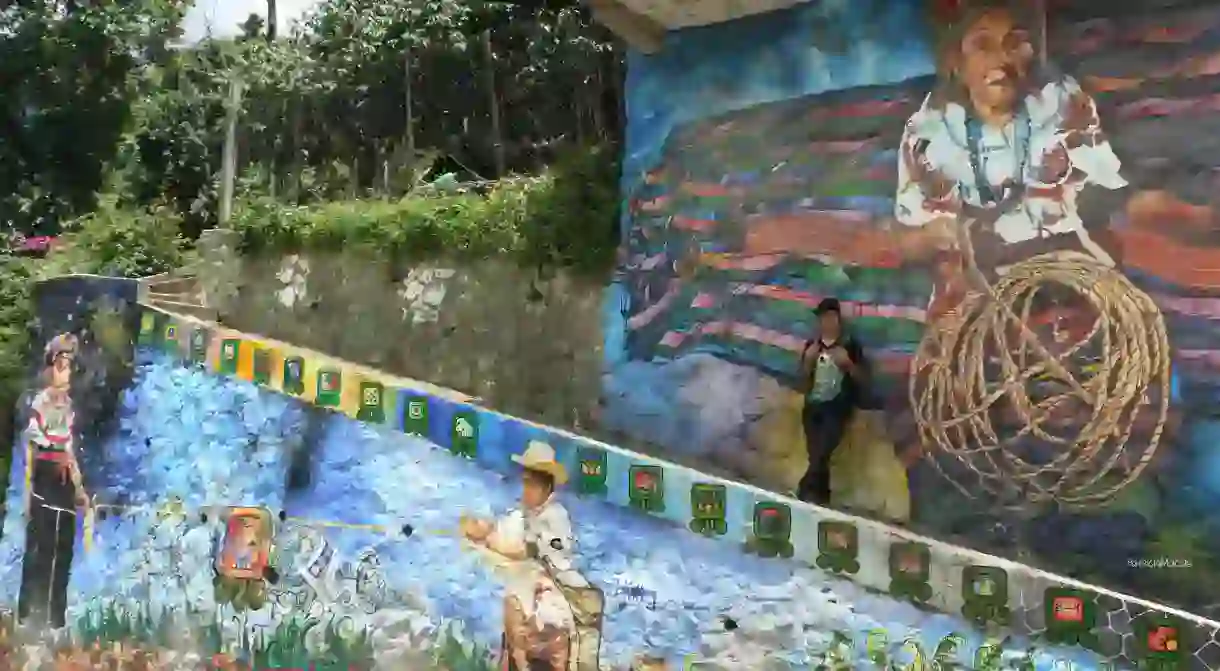The Endangered Art of Agave Cactus-Weaving on Lake Atitlán, Guatemala

The tradition of cactus-weaving in Guatemala creates beautiful and durable products. Today, old weavers and young artists are fighting to preserve it as an alternative to plastic and to preserve Mayan identity and culture.
The towns that surround magnificent Lake Atitlán in Guatemala are famous for their Mayan languages and culture. The village known as San Pablo la Laguna is called “Rope Spinner Hill” in Tz’utujil, the local Mayan language. It was once home to hundreds of artisans who wove agave fiber into a range of durable products, including rope, hammocks and bags.

Today, only five families preserve the tradition, says weaver Elena Matzar (pictured below). Hers is one of them. She makes ropes, sacks and bags from agave fiber that last for years using a process passed down from her mother. She explains that there are so few agave artisans left around Lake Atitlán due to the arrival of cheap synthetic fibers, such as nylon, when fewer people were willing to pay enough for agave products for production to be worthwhile. Also, agave leaves are becoming increasingly expensive as they disappear. Coffee has displaced the once ubiquitous agave in the town’s fields.

After Matzar buys agave leaves, she removes their spines and strips the moist green pulp from the fibers that run the length of each leaf. She washes and dries the fibers, then sets them in a b’atzb’al, or spinner. Matzar then uses swift spinning techniques to create different kinds of rope, each used for a different product.

She runs corn cobs without kernels along the rope to strip away imperfections. When she can, she applies a thin layer of pig fat as a preservative. Then she weaves elaborate patterns by hand to create finished products. Though Matzar barely makes a profit, she says it’s important to keep this tradition alive.

Miguel Ujpán, a 24-year-old local artist, agrees. He says, “People were wrong not to preserve this tradition, even just as a hobby. But the important thing is that women like Elena keep it present. All we have to do is put on some workshops and get some interest and it can be rescued.”
Ujpán made a documentary about the preparations for the annual Ruk’u’x Indigenous Art festival in Sololá, Guatemala. “I wanted to make the documentary because I saw the process as a kid, but it’s not common any more. And all the different fibers and plastics used now are a huge source of pollution.”
He is so passionate about the practice that he and a group of artists featured it in a mural at the town’s entrance. “It’s dedicated to the people who did this for so many years and sustained their families with this work,” says Ujpán.
The mural also features 20 nahuales, which are representations of divine energies in Mayan spirituality. In the center is Kat, a force that represents networks and community. Community and tradition are a major theme in Ujpán’s art because, he says, art, community and tradition help young people escape the trap of drug addiction and crime.

This is especially important in San Pablo, where many families struggle to make ends meet. “We spent so much time on this mural even though we didn’t get paid for it, because we want to do something with our lives. I decided to be an artist even though I knew it would be hard, because young people here have to find a way not to fall into the same traps.”
Ujpán is optimistic that agave rope will make a comeback, along with other traditions. “It helps new generations to know their roots and their culture, and have a strong identity. There may soon be interest in learning again. Not only as a solution to replace plastic, but… to go back to dressing ourselves in art. That would be ideal for humanity, wouldn’t it? To use the traditional huipiles and other items that mean more than just artistic decoration, that are like a connection of the spirit to material life, to place, to identity. It would be so cool to see a generation like that.”













